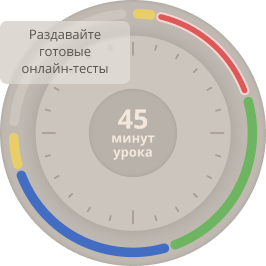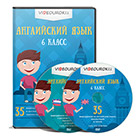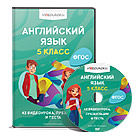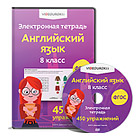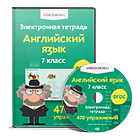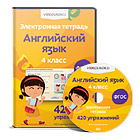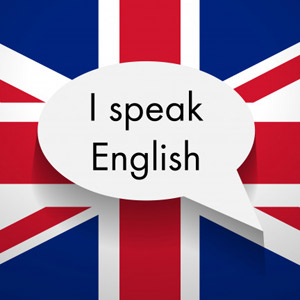Прочитайте тексты и установите соответствие между текстами и их заголовками: к каждому тексту, обозначенному буквами А–G, подберите соответствующий заголовок, обозначенный цифрами 1–8. Используйте каждую цифру только один раз. В задании есть один лишний заголовок.
1. Local legends 2. Special in many ways
3. Tourist аttraction 4. Diverse wildlife
5. Protection of the ecosystem 6. Extinct species
7. Scientific expeditions 8. Harsh climate
A. The world’s deepest lake, the Baikal, is in Siberia. It is also the largest freshwater lake in Eurasia and the oldest lake on the Earth. At least 1,500 unique species live there - they cannot be found anywhere else on the planet! The water in the lake is so clear that if you drop a coin, it can be clearly seen a hundred feet below the water.
B. People who live in the Baikal region believe that it’s a unique and mysterious place. According to them, the water from Lake Baikal can cure different illnesses, gives you strength and clears your mind. They also say that the lake was formed millions of years ago when a huge, hot rock fell to earth. It melted the ice around and that was how Lake Baikal appeared. The story about the meteorite has, however, never been proved by scientists.
C. The lake has also become famous for its unique fish and birds that are not found in other waters. The lake is home to more than 1000 animal species. Among them there are the world’s only freshwater seals. There’s no evidence of how the seals got to the lake, but they obviously enjoy their life there. Huge brown bears often come to the lake out of the forest to hunt and fish.
D. Though Lake Baikal is located in a very remote place, and is difficult to reach in autumn and winter, it attracts thousands of visitors every year. A chance to see this unique place is worth the long journey! On the banks of Lake Baikal you can stay in a modern, comfortable hotel, take part in hiking tours and enjoy the untouched natural beauty. People who have visited Lake Baikal once want to return to the place again and again.
E. However, the growing popularity of the lake and the industrial development of the region have caused ecological problems. The safety of this unique natural ecosystem has been discussed at an international level. Now Lake Baikal is on the list of heritage sites protected by UNESCO. A federal state law about the conservation of the lake was also supported in Russia.
F. The lake attracts not only tourists but also many wildlife researchers, biologists and even archaeologists. The world famous explorer and scientist, Jacques Cousteau, and his team spent lots of time studying the deep waters of Lake Baikal. They also shot a film about their research that was broadcast by major TV channels all over the world.
G. Everyone considers the Siberian climate very severe, which is perfectly true for the Baikal region. The winters there are really freezing - the average temperature is as low as -25 degrees Celsius. Due to its location in the middle of the continent, the place is characterised by a sharp contrast between winter and summer temperatures. The summers are generally cool, with a few hot days. The sun shines brightly above the lake till late autumn.
| Прочитайте тексты и установите соответствие между текстами и их заголовками: к каждому тексту, обозначенному буквами А–G, подберите соответствующий заголовок, обозначенный цифрами 1–8. Используйте каждую цифру только один раз. В задании есть один лишний заголовок. 1. Alaska in the past 2. Hopes seldom come true 3. Close neighbours 4. A mistaken opinion 5. Winter sporting activities 6. The deal of the century 7. Back to nature 8. Popular tourist routes A. Alaska and Russia are less than 3 miles apart at their closest point in the Bering Strait. In winter, it is possible to walk across the ice from one country to the other. Alaskan and Russian natives on either side of the Bering Strait carry on active border trade and visit each other. Nowadays the University of Alaska has more Russian students than any other university in the United States. B. The name of the largest American state comes from the Aleut language for ‘great land’. Native American people - Inuits, Yupik Inuits and Aleuts -have lived in Alaska for thousands of years. Life in Alaska has always been difficult, but they learned to adapt to the harsh climate. They lived by hunting seals, whales and bears and by fishing. They used sledge pulled by dogs to travel over the snow-covered land, and lived in igloos - houses made of snow. C. The territory of Alaska was purchased from the Russians for $7.2 million (very cheaply). Alaska was considered to be a frozen wasteland and nobody could imagine that it would turn out to be one of the United States' richest resources for gold and oil. For many years the Americans called the buying of Alaska ‘Seward's Folly’, after Secretary of State William H. Seward, who arranged the purchase in 1867. D. Most tourists expect to find the Alaskans still living in igloos and leading an isolated life on the snowy plain. To their surprise, the Alaskans’ daily life does not differ much from life in the central parts of the country. Most Alaskans live in modern homes, drive cars, watch TV, and shop in modern stores. Alaska’s communities have restaurants, theatres, museums, and modern health care facilities. The real life in Alaska is much less exotic than it is described in books and films. E. The discovery of gold in 1896 started a huge Gold Rush that brought thousands of people to Alaska. All the adventurers wanted to make a fortune, but many died of cold and hunger on their way to the gold-field. And very few of those who survived managed to find the gold. The famous writer Jack London tried his chance in Alaska too, and many of his books were influenced by his personal experience. F. The small Alaskan town of Gustavus is an interesting community. The town's 400 citizens are a mix of professional people - doctors, lawyers, former government workers and artists. For various reasons they decided to drop out of the stressful city life and live on their own in the middle of the woods. Electricity only arrived in the early 1980s and in some homes they still get water from a pump and make a fire to heat water to wash in. G. Iditarod, one of Alaska’s most famous events, takes place in early March. It is the 1,100-mile sled dog race from Anchorage, the capital of Alaska, to Nome, a city on the coast of the Bering Sea. The race is very popular and the winners and their teams of dogs become local celebrities. Downhill and cross-country skiing as well as skijoring (when skiers are pulled by one or two dogs) are very popular in Alaska too. |
Прочитайте тексты и установите соответствие между текстами и их заголовками: к каждому тексту, обозначенному буквами A–G, подберите соответствующий заголовок, обозначенный цифрами 1–8. Используйте каждую цифру только один раз. В задании есть один лишний заголовок.
1. A bright fountain
2. Who lives there
3. What would happen if …
4. Once upon a time it was green
5. A dry land
6. White on blue
7. The discovery of the continent
8. Environmentally friendly
A. Antarctica has no government and no country owns this continent. It is the only region on earth which is not ruled by any nation. There are no local people in Antarctica. However, in the summer season, more than four thousand scientists from different countries come to study the mysterious region while one thousand stay there in the winter season. The scientific bases are the only ‘settlements’ with residents who stay for several months or a year.
B. Antarctica is a huge desert, despite the fact that it holds 70 percent of the world's fresh water. Usually, no more than six centimeters of rain fall per year. Most of this falls in the eastern part of the continent. These figures are comparable to those of the Sahara desert. Some parts of Antarcticahave had no rain or snow for the last 2 million years.
C. You will be surprised to know that Antarctica was found just 200 years ago. The ancient Greeks did not mark Antarctica on their maps. It was only in 1820, when travellers found this icy white continent by accident. The captain of the Imperial Russian Navy, Fabian Gottlieb von Bellingshausen, was the first person who saw Antarctica from his ship. It was on 27th January 1820
D. Antarctica contains about 90 percent of the world's ice. Antarctica has 8 times more ice than the Arctic. If all of the Antarctic ice melted, the sea level around the world would rise about 70 meters. But the average temperature in Antarctica is –37°C and the ice is in no danger of melting so far. In fact, in most parts of the continent it never gets above freezing.
E. Since Antarctica is not a country, it has neither a state emblem nor an official flag. However in 2002, a special flag was approved by the Antarctic Treaty Organization. The design of the flag was suggested by Graham Bartram who used the flag of the United Nations as its basic pattern. The white image of Antarctica on the blue background looks simple and elegant. Nowadays it is used as an informal flag of the continent.
F. Fifty million years ago Antarctica had a mild climate, evergreen forests and many more kinds of animals than it has today. Due to continental drift, Antarctica moved from the equator to the South Pole, where it is today. Nowadays, Antarctica is the coldest continent on the planet and almost completely covered with a layer of ice. However, its wildlife is quite diverse: from emperor penguins, southern elephant seals, humpback whales to small bugs in the coastal areas.
G. Antarctica is covered with thick snow. Everything around is white, but in the McMurdo Valley there is ‘a Bloody Waterfall’ or ‘Blood Fall’. This waterfall is actually glacier water which is red-colored like blood. Microbes, which can live there without light and oxygen, give it the red colour. They just eat the iron and sulfur in the water. When the water comes out from the surface of the ice, it looks like a small red waterfall.
Прочитайте тексты и установите соответствие между текстами и их заголовками: к каждому тексту, обозначенному буквами A–G, подберите соответствующий заголовок, обозначенный цифрами 1–8. Используйте каждую цифру только один раз. В задании есть один лишний заголовок.
1. A great source of water 2. A famous Russian toy
3. A great source of knowledge and information 4. Getting higher than the sky 5. The fresh air producer 6. Famous for its size
7. Named after a famous scientist 8. Spoken all over the world
A. Russia, also officially known as the Russian Federation, is the largest country in the world. Its territory is 17,075,400 square kilometers. According to scientists, the country’s territory would almost cover the surface of the planet Pluto. It is the only country which is washed by 3 oceans and 12 seas. Russia is considered to be a European country, but two-thirds of the country are in Asia. However, most of the population lives in the European part of Russia.
B. Siberian Lake Baikal is the largest source of fresh water on the planet. All the 12 major rivers of the world (the Volga, the Don, the Yenisei, the Ob, the Ganges, the Amazon, etc.) would need to flow almost a year to fill a pool equal to the volume of Lake Baikal. Another impressive fact is that even if all the rest of the planet’s fresh water supply were to disappear, there would be enough fresh water left in Lake Baikal to supply the people of the earth for up to 50 years.
C. Russia is the country with the largest forest reserves in the world. 45% of its territory is covered in green forests. The forests are located in the European north of the country, in Siberia and in the Far East. Forests play an important role in the life and welfare of people. Russian forests are the biggest ‘lungs’ of the Earth. They produce oxygen and clean the atmosphere of carbon dioxide and other pollutants.
D. There are more than five thousand languages in the world. Russian is one of the five major world languages. 280 million people around the world speak Russian and it is one of the most widely spoken native languages in Europe. The United Nations uses Russian as one of the official languages of the organization. It is also used in international commerce, politics, academic and cultural life.
E. For its collection of books, the Russian State Library is considered to be the biggest in Europe and one of the largest in the world. The Russian State Library was founded in 1862, in Moscow. The library has over 275 km of shelves with more than 43 million items, including books, journals and magazines, art publications, music scores and sound records, maps and other things. There are items in 247 languages of the world.
F. Russia is known all over the world for its space programmes. In 1957 the Soviet Union launched Sputnik 1, the first artificial satellite in the world. Four years later, in 1961, human space flight was accomplished. Soviet cosmonaut Yuri Gagarin was the first man to journey into space. He orbited the Earth and landed the same day. There are other impressive space achievements of the country like the first long space flight, the first woman cosmonaut in space, and the first spacewalk.
G. One of the most popular souvenirs tourists buy in Russia is the Matryoshka. It is a doll made of wood and painted with colourful ornaments. Although the Matryoshka is called a doll, it is actually a set of dolls of different sizes placed inside one another. A traditional Russian Matryoshka has big black eyes, red healthy cheeks and a friendly smile. She wears a national Russian costume, and often has some flowers or a basket of fruit in her hands.
Прочитайте тексты и установите соответствие между текстами и их заголовками: к каждому тексту, обозначенному буквами A–G, подберите соответствующий заголовок, обозначенный цифрами 1–8. Используйте каждую цифру только один раз. В задании есть один лишний заголовок.
1. A place to learn about the traditional craft
2. Strict rules to follow
3. The local crafts festival
4. The origin of the name
5. A special and recognizable design
6. Good for medical use
7. Geographical location
8. A wide choice to offer
A. Gzhel is a famous type of Russian ceramics. It comes from the region with the same name, which is situated about sixty kilometers away from Moscow. Gzhel is not one place, to be exact. There are about 27 villages in the area which are involved in Gzhel ceramic production. The place can be easily reached by railroad and it is often visited by tourists.
B. It is believed that the place where Gzhel ceramics is produced, was named after the river Gzhelka, a small river flowing through the area. However, linguists still argue about where the word comes from. Some of them say it has Baltic roots. Others claim that the name is connected with the technological process. The word gzhel is similar to an old Russian word which means burn. Indeed, the clay should be burnt to become hard before it is good enough for pottery.
C. The clay production in Gzhel started to develop in the 17th century when the Russian monarch ordered the delivery of different sorts of clay to Moscow. Gzhel clay was found to be the best for making pots and containers for pharmacies. The doctors and pharmacists valued it a lot. They preferred to keep most of the medicine and herbs in ceramic pots to keep them fresh and effective for a long time.
D. By the 19th century, the Gzhel industry had become a profitable business. About twenty-five factories were producing all sorts of cups and plates, decorations and toys. Shiny white horses, birds and dolls became really famous. Dinner sets were popular with rich people and even with monarchs. Official sets contained up to eighty items. However, the largest dinner set was designed for a hundred and fifty people.
E. Gzhel ceramics can be easily identified by its beautiful white and blue coloured decoration. White means pure snow and moonlight. Light and dark blue symbolize the calm sky and rivers. Though the images on ceramics are usually flowers, they are all unique. Every item is a handmade picture with a unique combination of lines. Blue and white Gzhel ceramics are well-known all over the world.
F. You may think that Gzhel painters create their works freely, using their imagination. Although the talent of an artist and creativity are certainly important, the painter needs to follow a very strict technological scheme. Each ornament represents an image or a story that is given a code. All the codes are listed in catalogues and kept in the factory library. Technologists use catalogues to modernize production and organize training for new painters.
G. The Gzhel museum is a special attraction. The finest items from the 15th century to the present are displayed there. The collection of the museum contains about two thousand pieces and presents a great variety of bowls, vases, tea sets, toys and statutes. The place is good for a family day out – apart from enjoying the displays and buying souvenirs, you can watch the production process or take classes in sculpture or painting.
Преобразуйте слова, напечатанные заглавными буквами в конце строк, так, чтобы они грамматически и лексически соответствовали содержанию текста. Заполните пропуски полученными словами.
Russia is a large country with great diversity in flora and fauna. There are several large ____NATION_________ parks in Russia. A lot of different animals live there. Wolves are probably the best known, and are very well studied animals, so we have enough ______INFORM________ about their diet and behaviour. The wolf is a good HUNT_________. They usually hunt wild animals like deer and hares, but sometimes they can attack sheep, goats, and cows. The wolf tries to avoid people and only goes into villages when he is _______REAL______ hungry. In some ______RUSSIA________ tales, the wolf is often represented as a clever animal that helps the main character, Ivan. The wolf is usually direct and _____CREATE________ and helps Ivan to cope with many difficult problems.
It was a great day yesterday. My friends and I ___GO____ to see a performance at the Bolshoi Theatre. You certainly know that the Bolshoi Theatre is the ___FAMOUS____ theatre in Russia and probably in the world. But not everyone ___KNOW____ the history of the Bolshoi Theatre. According to historical documents, it __BEGIN____ in March 1776 when Prince Pyotr Urusov was granted Royal permission to build a public theatre in Moscow. Catherine II, Empress of Russia, was fond of arts. She ____NOT/MIND______ having a new theatre in her country. The original building of the theatre had a hall with almost 1,000 seats, a stage and an orchestra pit. Directly over the stage there ___BE____ boxes where the most noble fans of the theatre had their seats. The theatre has changed several times during __IT____ history. The building we can see today opened in 1825. It ___DESIGN____ by architect Andrei Mikhailov who was also the architect of the Maly Theatre. Since that time, the building has been rebuilt and renovated several times. Now it looks beautiful from the inside and outside. If I ___HAVE_______ the opportunity to go there more often, I would do it every week.
In Moscow, there are approximately 35,000 dogs living on the streets. Some of these ____HOME____ animals were born there. Others are just _____LUCKY____ pets that have been abandoned by their owners. For many dogs the city may be a ____DANGER___ place to live in. However, scientists were surprised to find out how ____EASY____ some animals can adapt to urban life. Some dogs have even learnt to use the city’s metro system! We still don't know how the dogs find out when to get off the train. One ___SUGGEST___ is that they use their excellent sense of smell to recognise the scents of their favourite destinations. Another idea is that they are able to remember the design of ___DIFFER___ stations and find the station they need
In some ______RUSSIA________ tales, the wolf is often represented as a clever animal that helps the main character, Ivan. The wolf is usually direct and _____CREATE________ and helps Ivan to cope with many difficult problems.
In Moscow, there are approximately 35,000 dogs living on the streets. Some of these ____HOME____ animals were born there. Others are just _____LUCKY____ pets that have been abandoned by their owners. For many dogs the city may be a ____DANGER___ place to live in. However, scientists were surprised to find out how ____EASY____ some animals can adapt to urban life. Some dogs have even learnt to use the city’s metro system! We still don't know how the dogs find out when to get off the train. One ___SUGGEST___ is that they use their excellent sense of smell to recognise the scents of their favourite destinations. Another idea is that they are able to remember the design of ___DIFFER___ stations and find the station they need.


